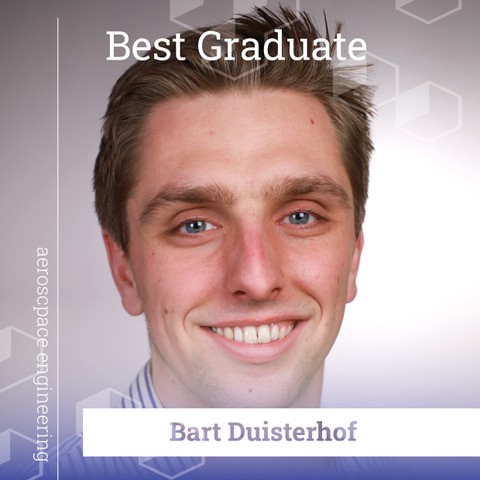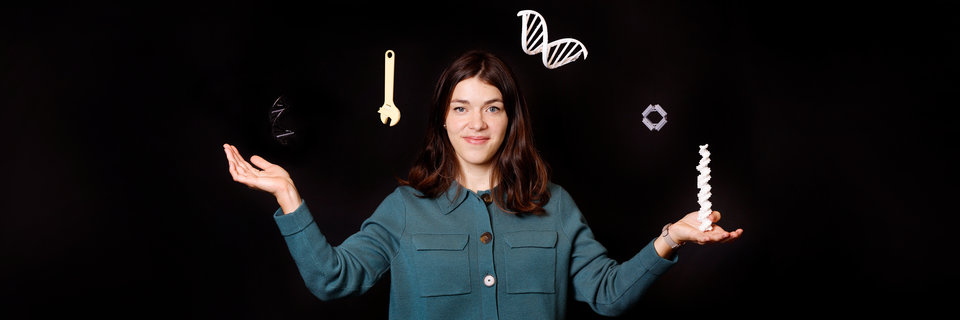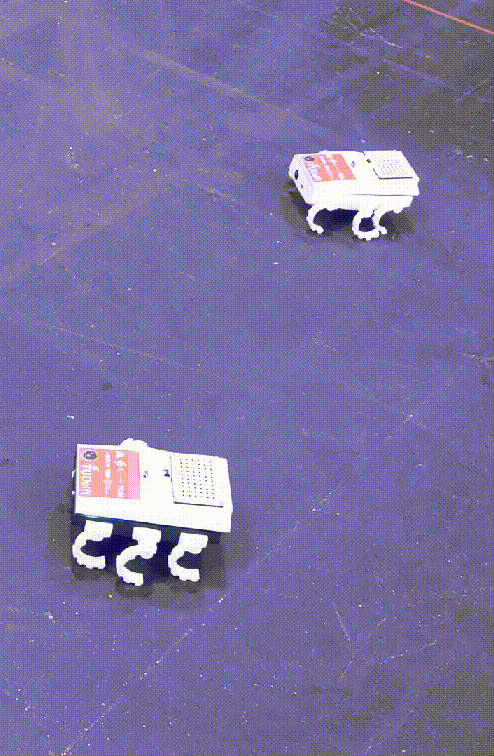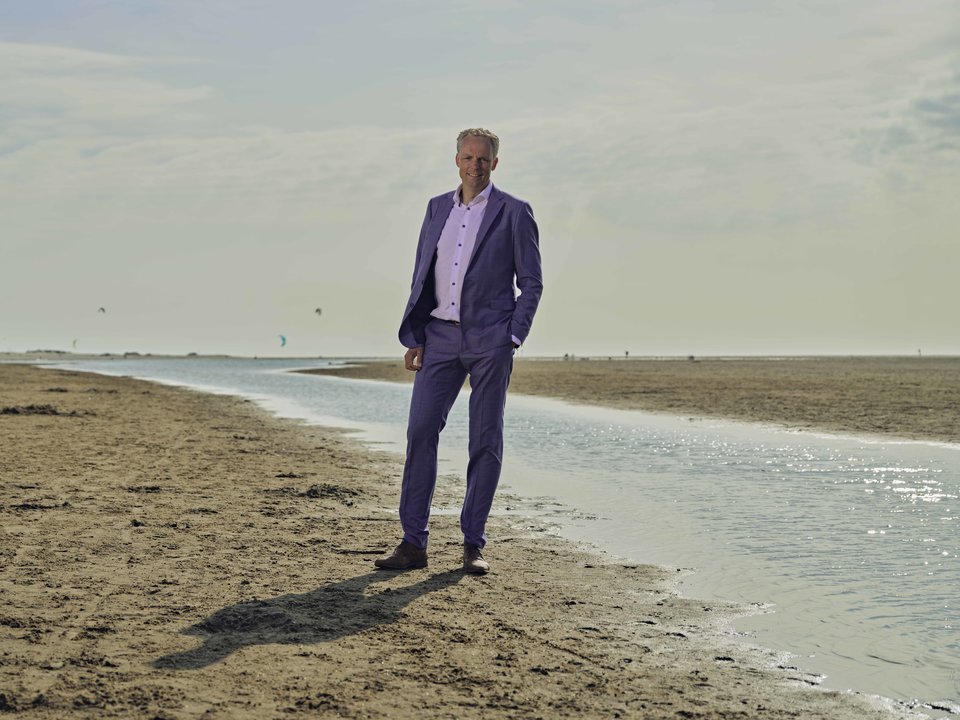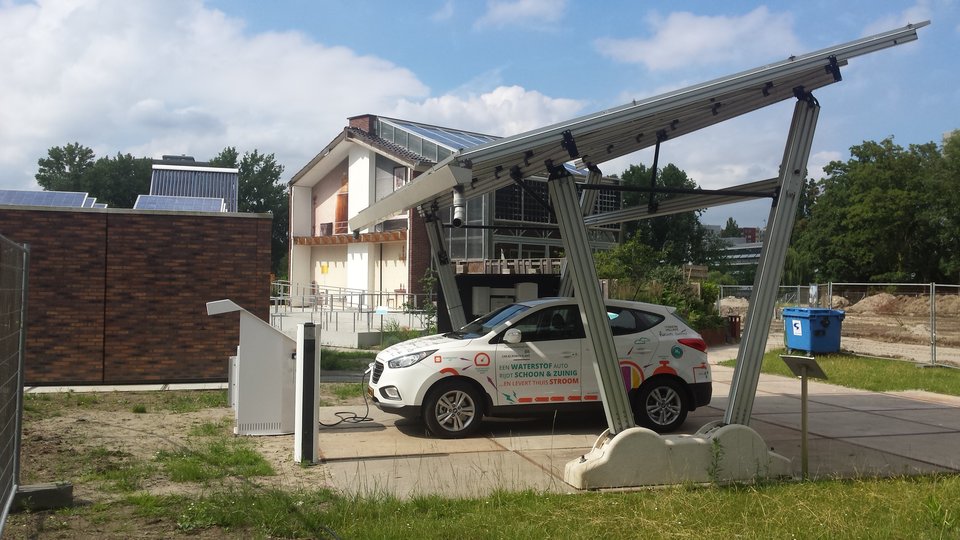Developing drones that are smaller and lighter than normal drones but still capable of performing the same tasks – Bart Duisterhof has succeeded in doing just that, and has been named Best Graduate in the Faculty of Aerospace Engineering. For his Master’s thesis, he developed smart mini-drones that can independently detect gas leaks. “If you’re not afraid of thinking outside the box, you can reach solutions that you might not otherwise have thought of.”
For operations in complex and small spaces, such as detecting a gasleak, you need small and low-cost drones. "Such spaces are often inaccessible or poorly accessible," says Bart Duisterhof. "There’s also a risk of explosion. You rather don't send people into such an area. Instead, you can use drones."
However, normal drones are often just too big for small spaces, Duisterhof continues. "This makes it more difficult to find the leak and there is a fair chance that the drone will crash into something. Then you lose your expensive drone ánd you haven't found the gas leak.
That's why Duisterhof came up with the idea of developing several small drones that spread around the room. "As soon as one of the drones detects gas, it communicates with the other drones, and together they locate the leak. So with several drones, you trace a leak more quickly. Another advantage of working with small, low-cost drones is that it is less of a problem if one or two fail or crash."
Outside the box
According to Duisterhof, it was a relatively risky choice of subject. “There had already been an earlier study about small drones and the detection of gas leaks. One of its conclusions was that it might not work. I found out that not every gas spreads equally well and is therefore difficult to detect. Fortunately, the gas in our tests was easily detectable."
For Duisterhof, this shows that you sometimes have to take risks in your research. “The great thing about a university is that you have the space to do that. I also chose something that’s not directly linked to my degree programme. I taught myself a lot of things, including how to make algorithms. It shows that it’s sometimes possible to think outside the box in your degree programme. That way, you can reach solutions you might not otherwise have thought of.”
Making optimum use of the chip
In order to detect gas leaks, the drones need to be able to navigate. Most drones use cameras or large lasers to do that. “Processing that data takes up a lot of space on the chip. So does the mapping software that uses complex optimisation to determine the best route. If you want to limit the weight of the drone, you can't take a powerful computer with you."
As regular navigation methods do not work on small drones, Duisterhof had to look for other solutions. For example, replacing a camera with small laser sensors. Duisterhof: “That makes a difference of several megabytes in terms of storage. It also reduces the drone’s weight, enabling it to fly for longer. By developing an algorithm that makes use of a set of simple behavioural rules, I was able to reduce the amount of data even further.”
Inspirational insects
For the algorithm, Duisterhof took inspiration from insects. “Insects follow a number of simple behavioural rules, for example to prevent collisions. An insect-inspired algorithm of this kind is known as a bug algorithm. That’s where the title of my Master's research ‘Sniffy Bug’ comes from.”
Rather than exactly copying the rules that the insects follow, Duisterhof an algorithm of his own. “In the end, I incorporated 16 parameters in my algorithm, including one that prevents drones flying into a wall or each other, without keeping so much distance that they might miss the gas leak.” Another parameter ensures that the drones work together, the so-called particle swarm optimisation (PSO).
Using free software
Because the components for the drones are not all readily available to buy, Duisterhof built the hardware for the drones himself. “The gas sensors I used can be found in standard smoke detectors, but I had to develop the green printed circuit board with the chip myself.”
That proved quite a challenge, continues Duisterhof. “The software program I used for it is very expensive. I was able to use a free trial, but it ran out after 15 days. That meant I only had time for a single design that had to be right from the get-go. I managed it with the help of a PhD student. After that, I had to solder it under a microscope. That was another thing I’d never done before.”

"When I embarked on my degree programme, I imagined I’d later go on to build aircraft at Airbus or do something in space travel. But it ended up being almost the exact opposite: tiny flying machines close to the ground."- Bart Duisterhof |
Successful test
Ultimately, Duisterhof proved successful in developing the drones he wanted, with a diameter of 12 cm and weighing 37.5 g. The algorithm had already been tested using a computer simulation model, also written by Duisterhof himself. But were the drones actually successful in detecting a gas leak?
Duisterhof: “Things are always different in practice. The effect of the wind is unpredictable. And is the sensor up to the job? The first successful test was such a special moment. It was just amazing seeing one of the drones detect a gas leak and the other two then flying towards it.”
New step forward in mini-robot autonomy
According to Duisterhof, his research marks a further advance in the autonomy of small robots. He is also keen to emphasise that the technology can also be used for other purposes than just gas leaks. “Think of greenhouses, where mini-drones can detect weeds or rot among the plants. Or even a moon lander. When you send that into space, you want to keep its weight as low as possible. Every gram counts.”
Just a few years ago, Duisterhof would never have imagined making a contribution to drone development. “When I embarked on my degree programme, I imagined I’d later go on to build aircraft at Airbus or do something in space industry. But it ended up being almost the exact opposite: tiny flying machines close to the ground. I think artificial intelligence is absolutely fascinating. Even more than flight system dynamics.”
Best Graduate Aerospace Engineering
In recognition of his Master’s thesis, Duisterhof was named Best Graduate of the Faculty of Aerospace Engineering. “That came as a surprise, but I think it’s really cool. It’s excellent recognition of my research and that kind of title looks great on my CV, of course. But, for me, the nicest thing was probably when my grandpa told me he’d heard about Sniffy Bug on NPO Radio 1. That may not count as scientific recognition, but it’s something really special.”
